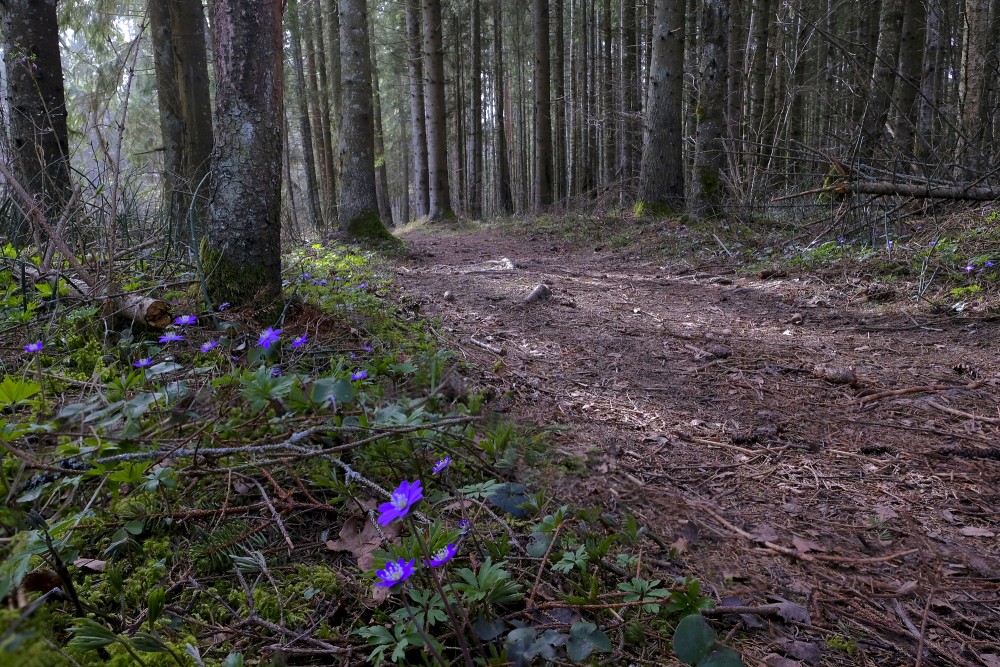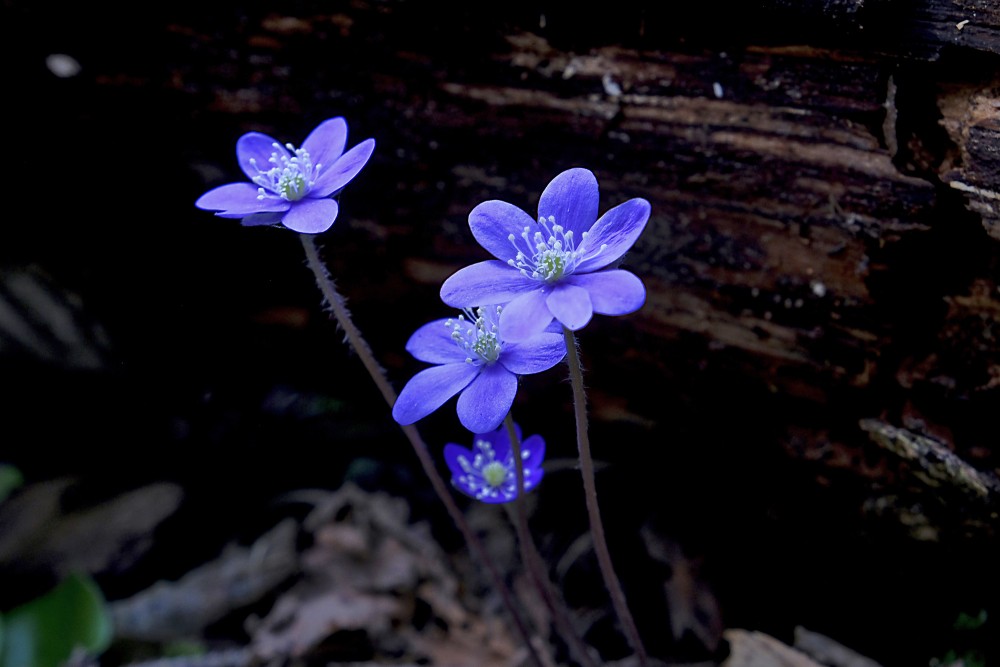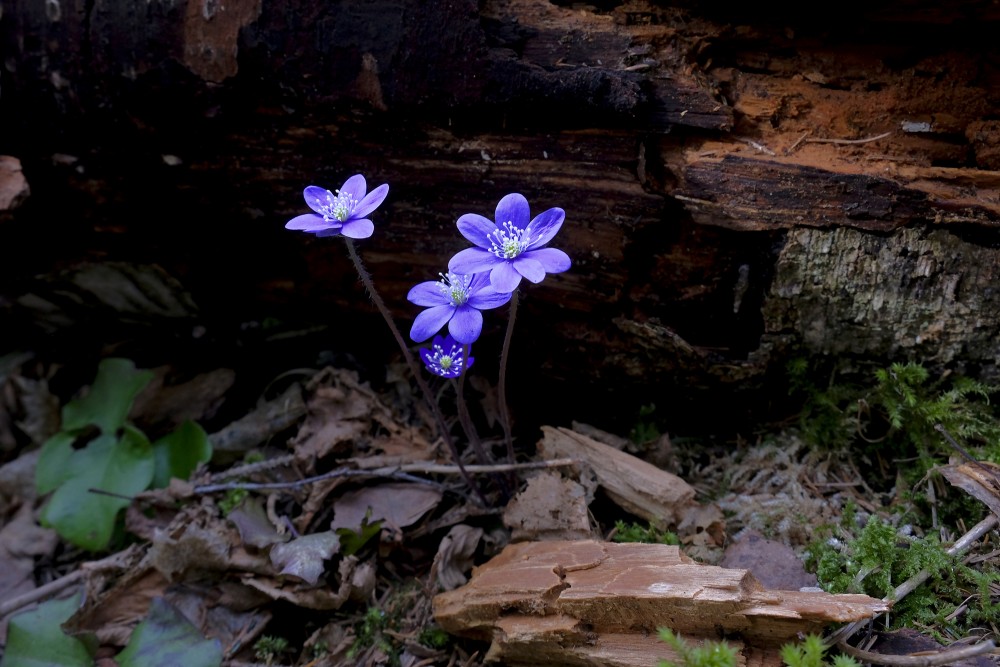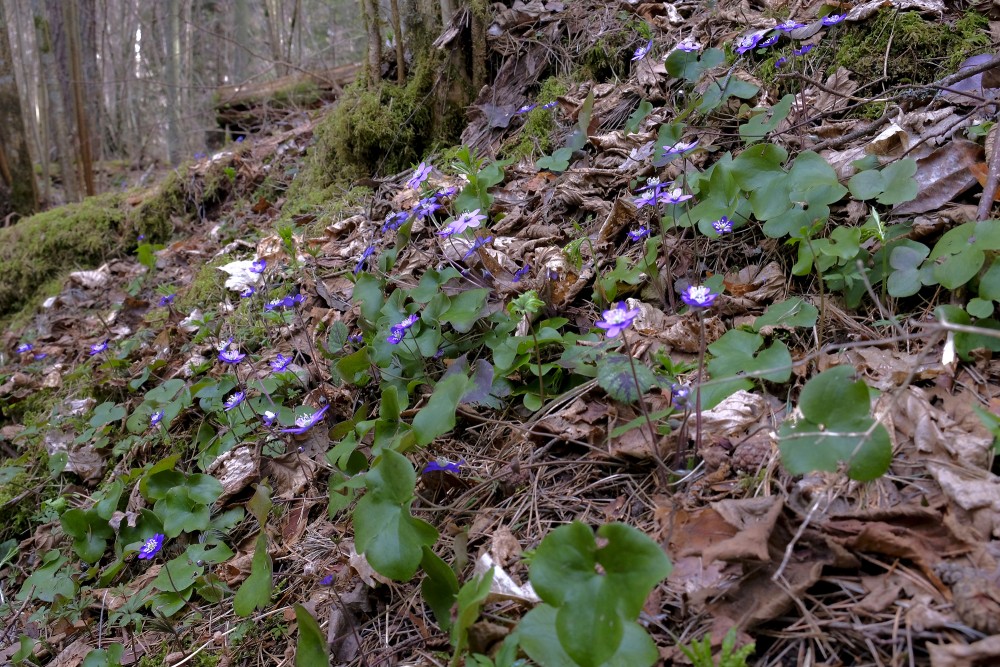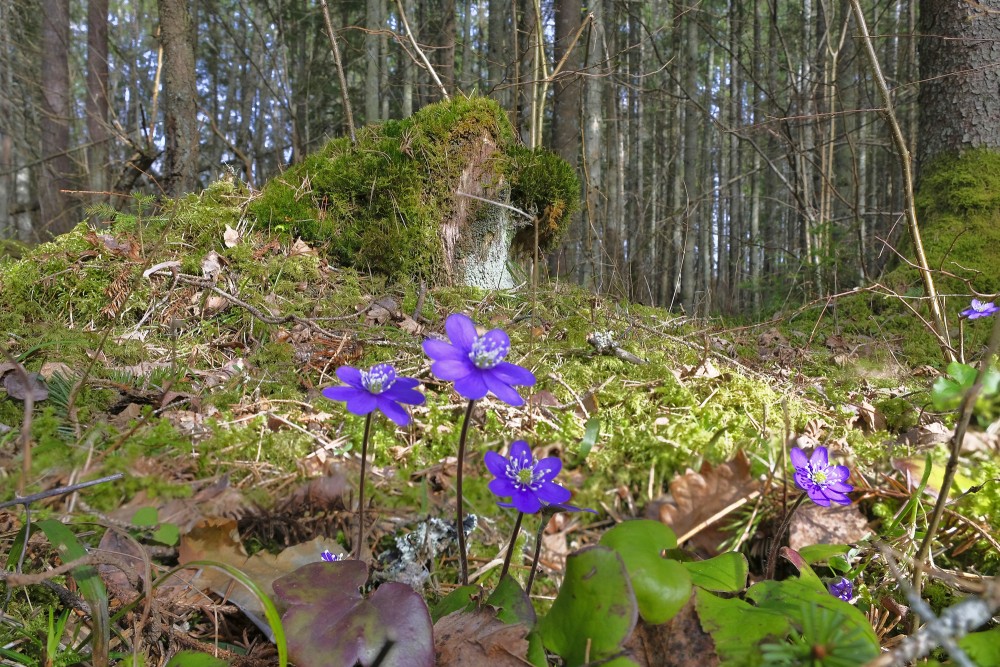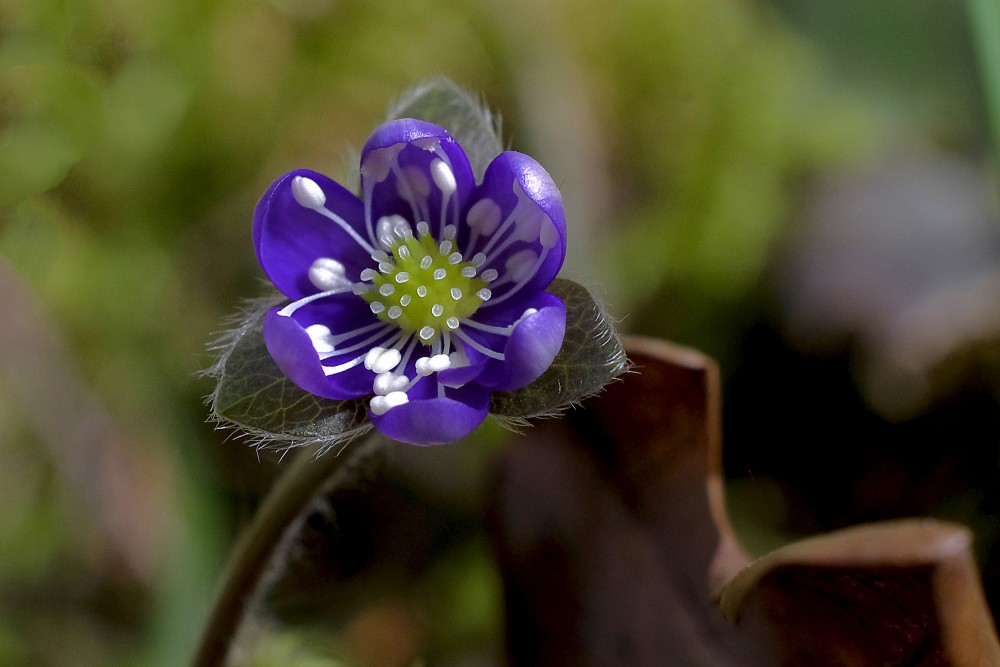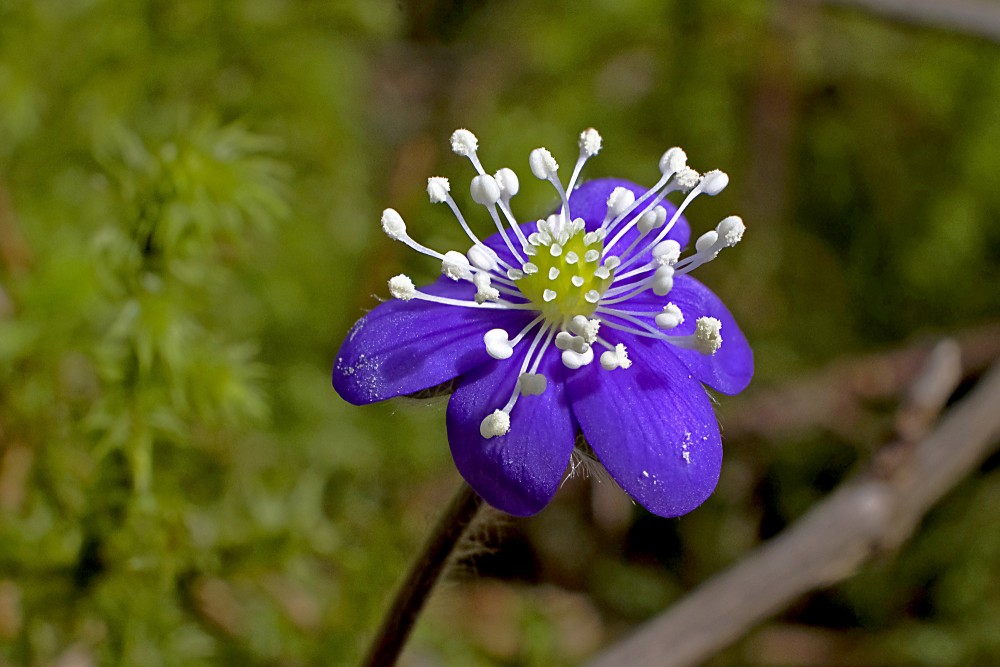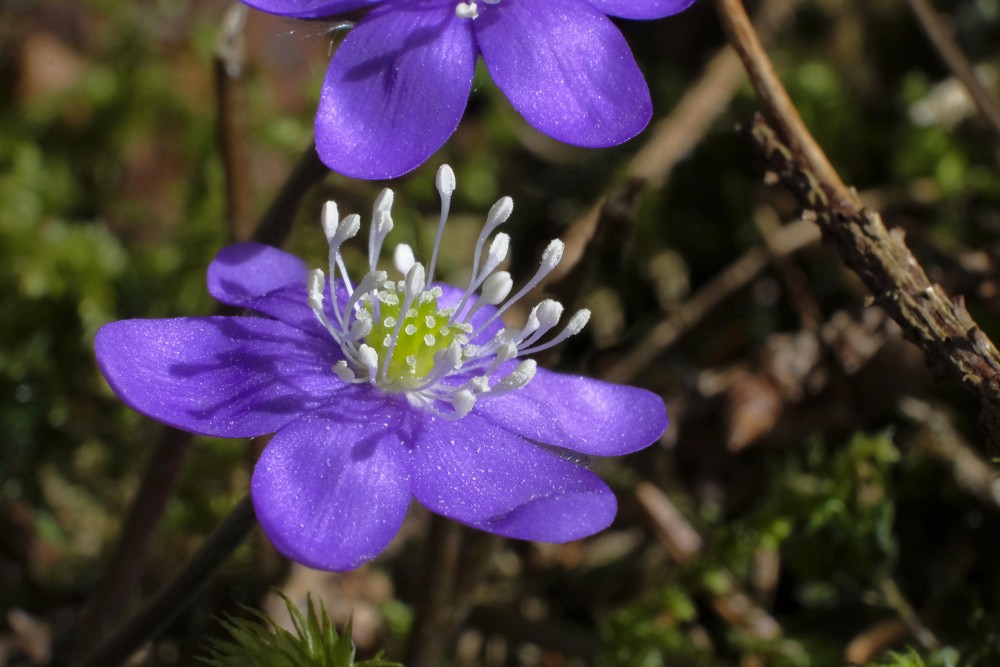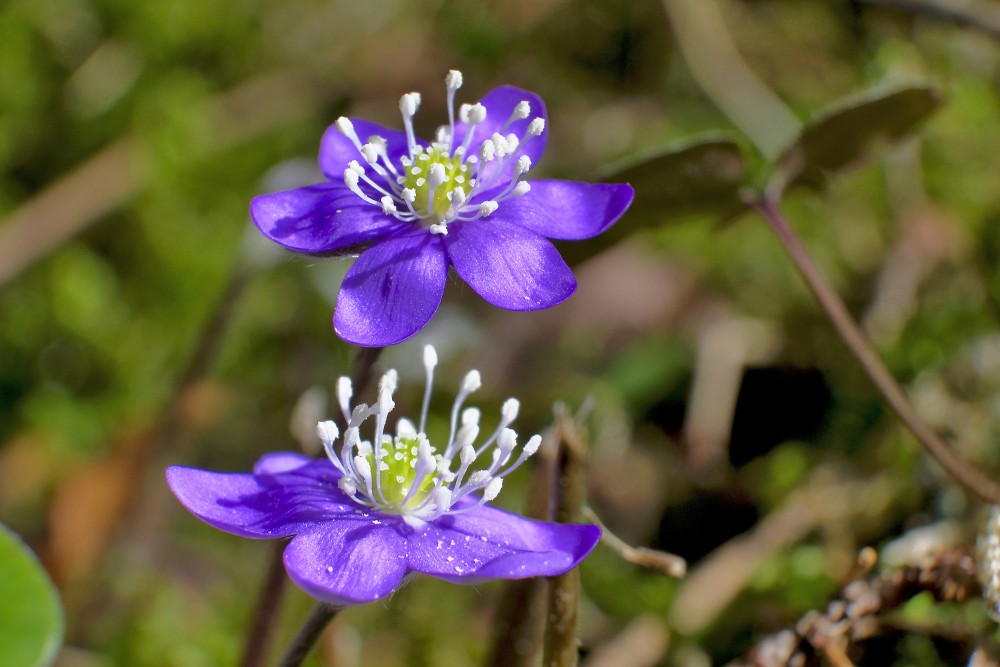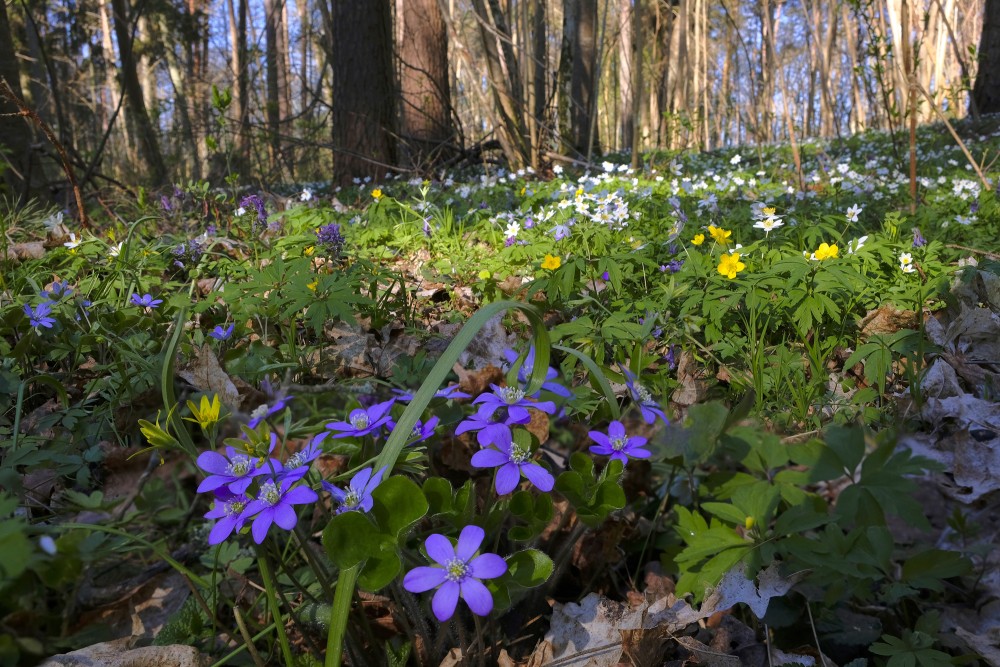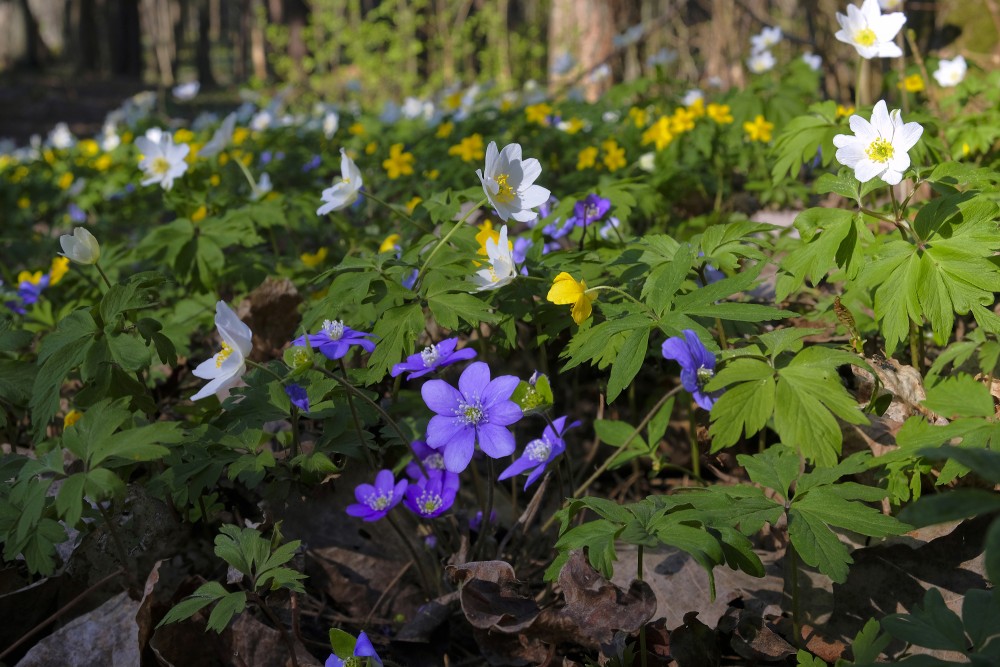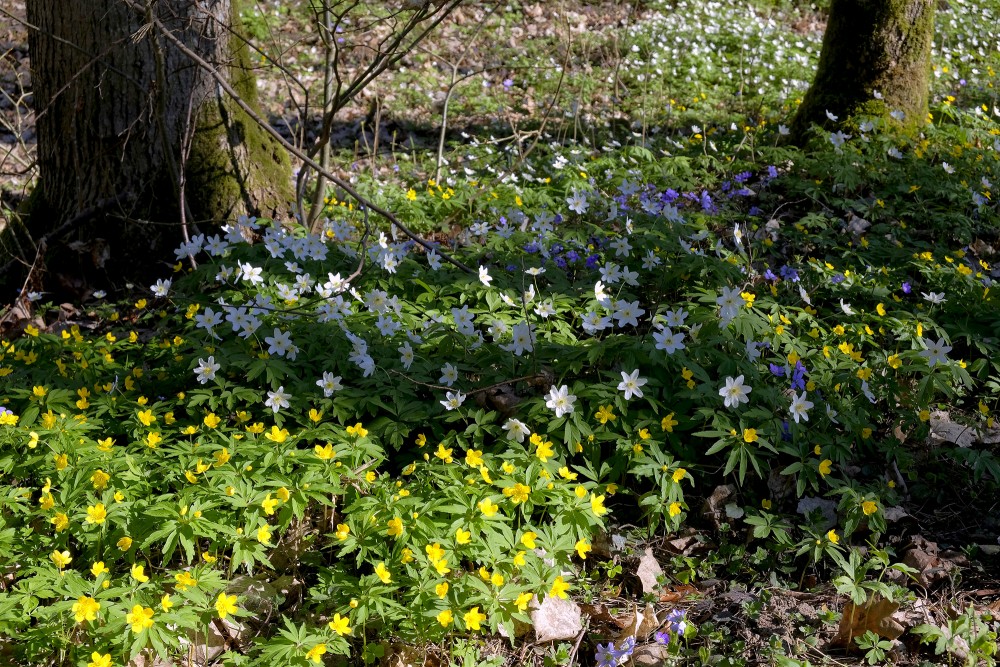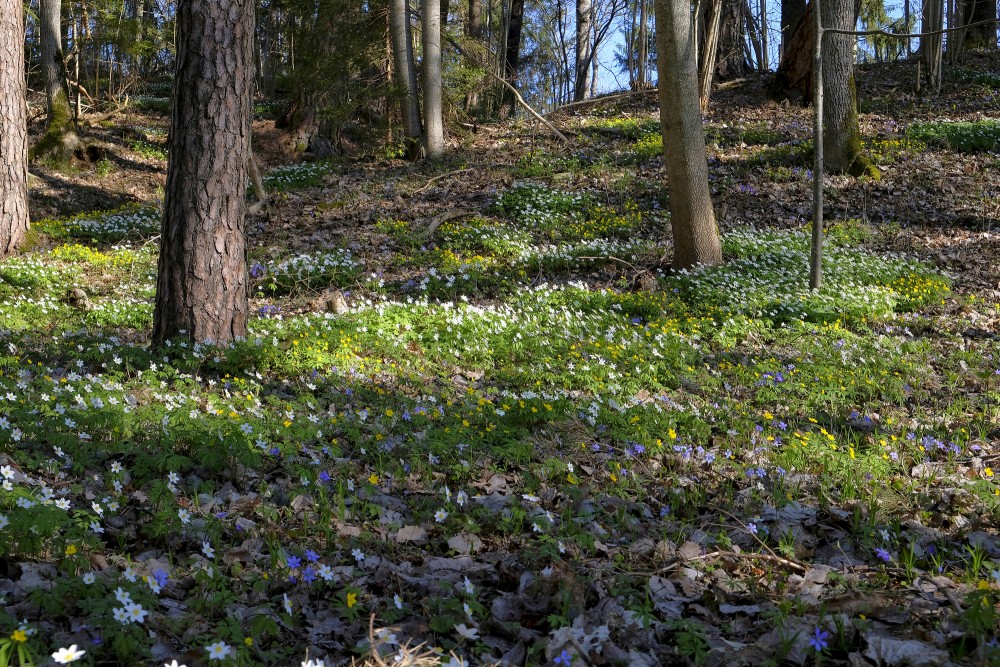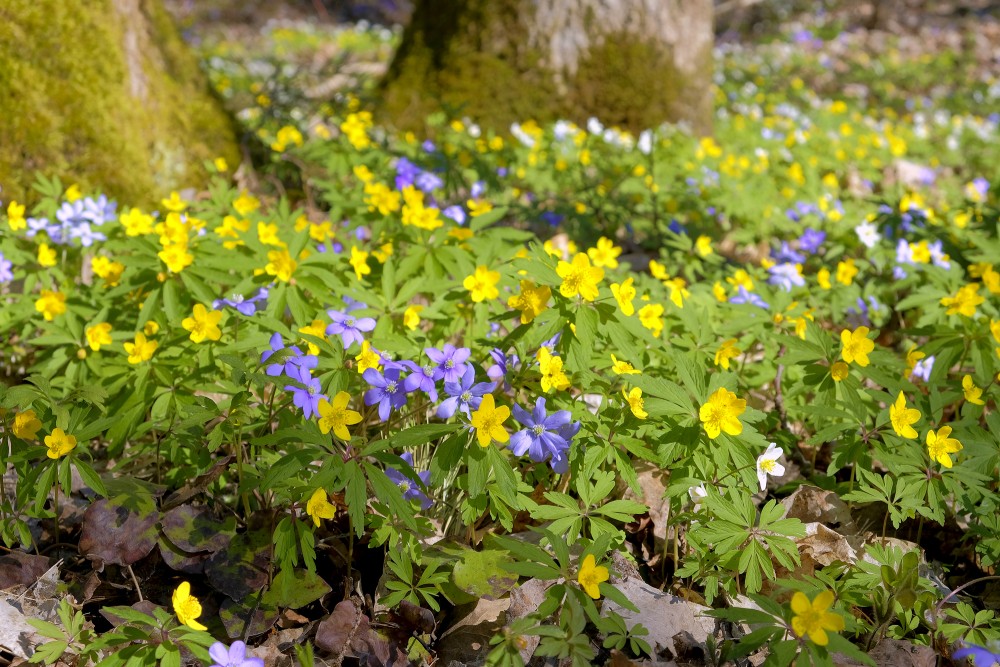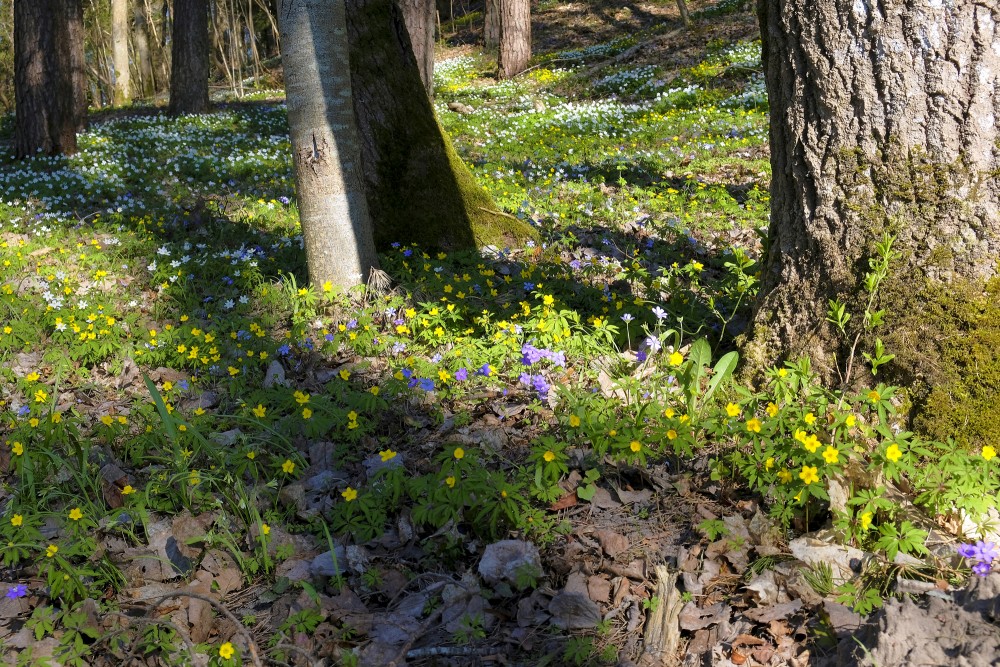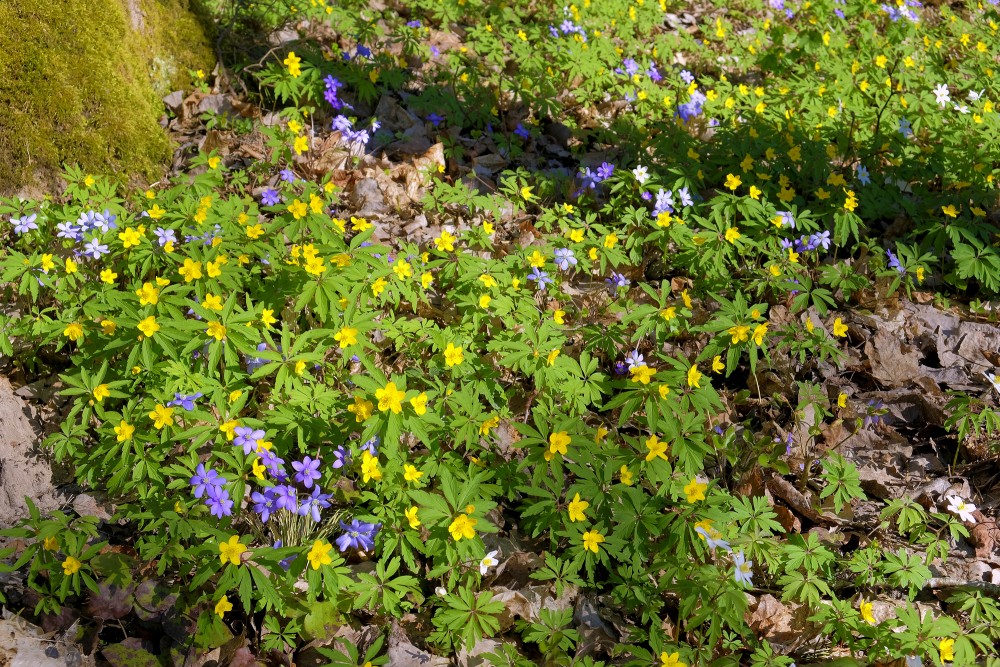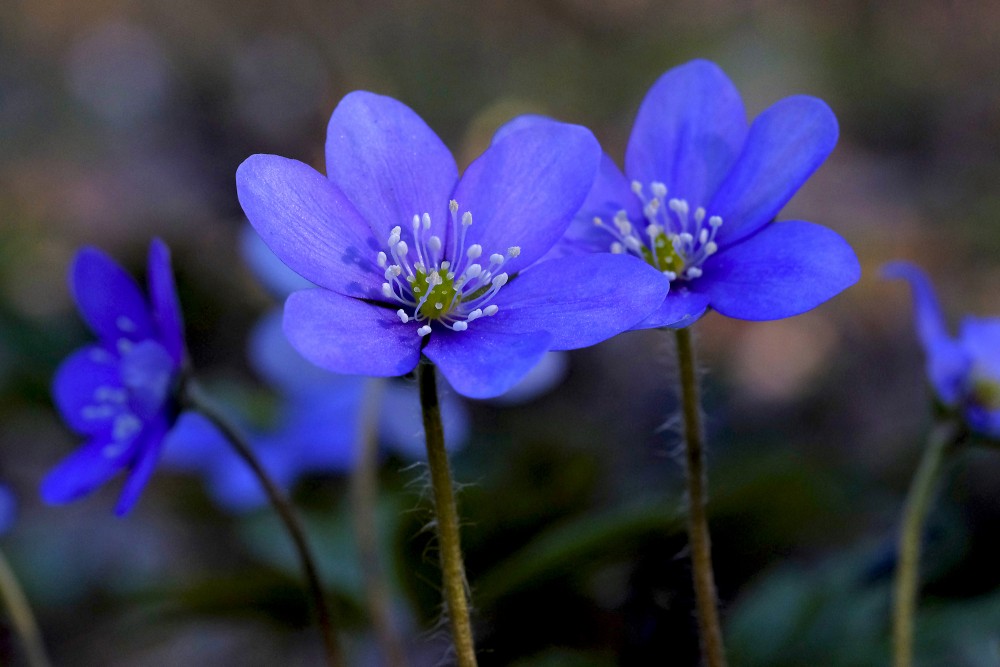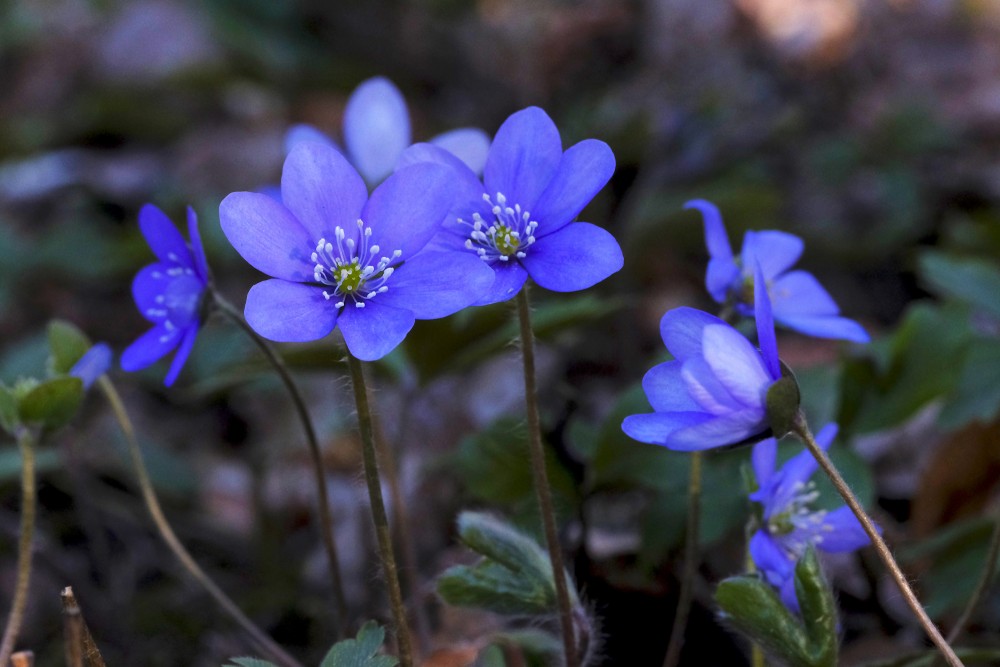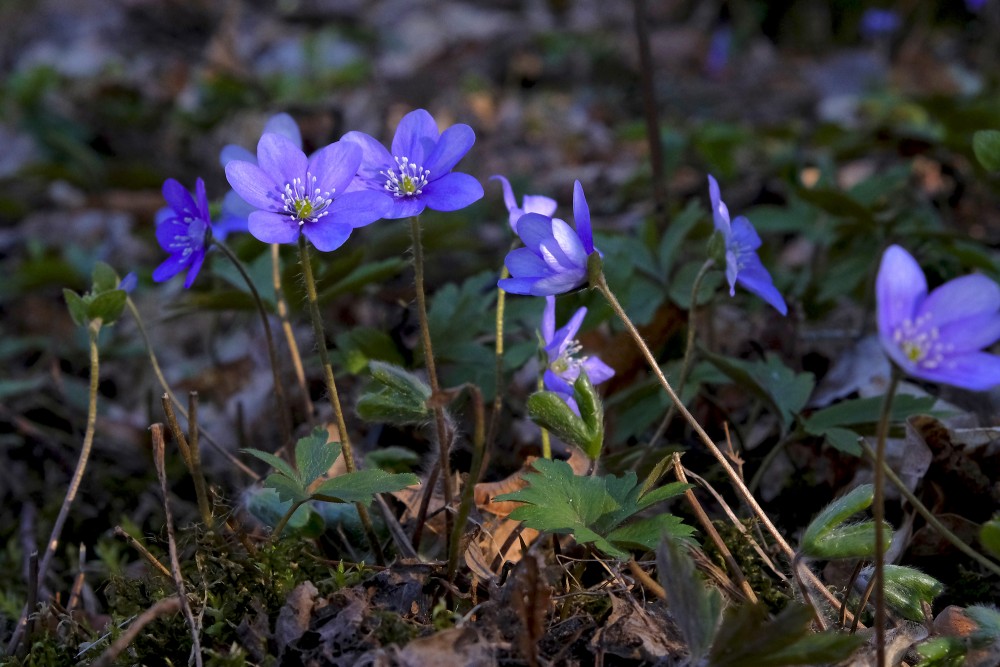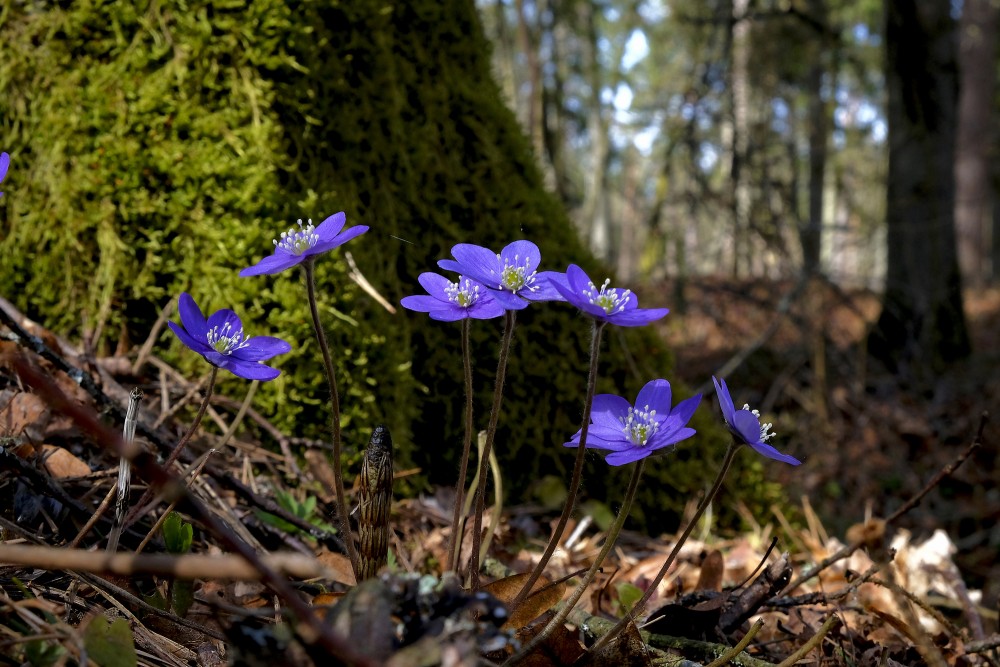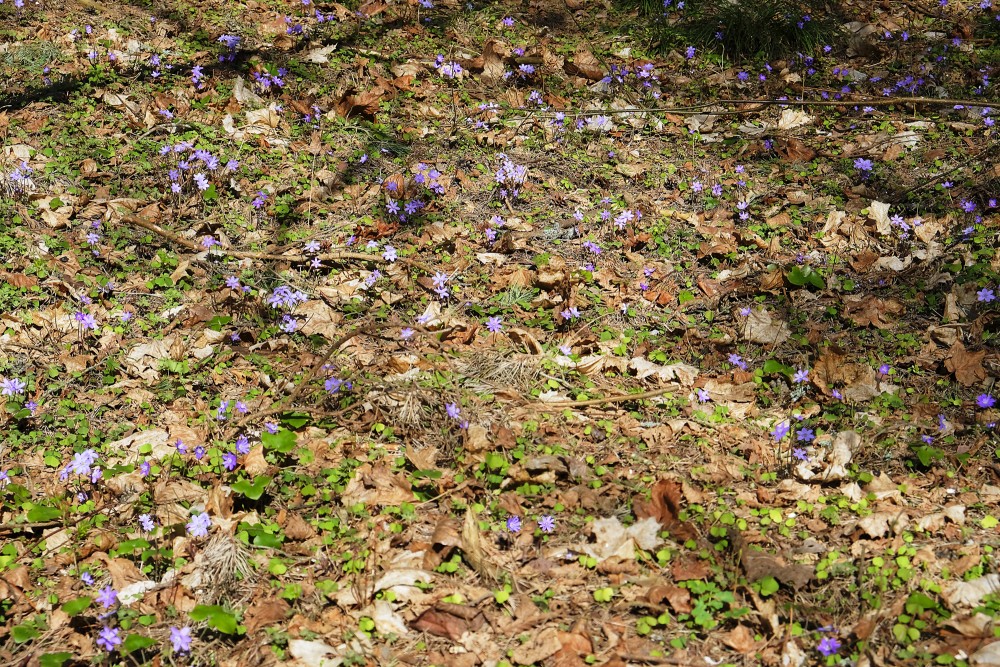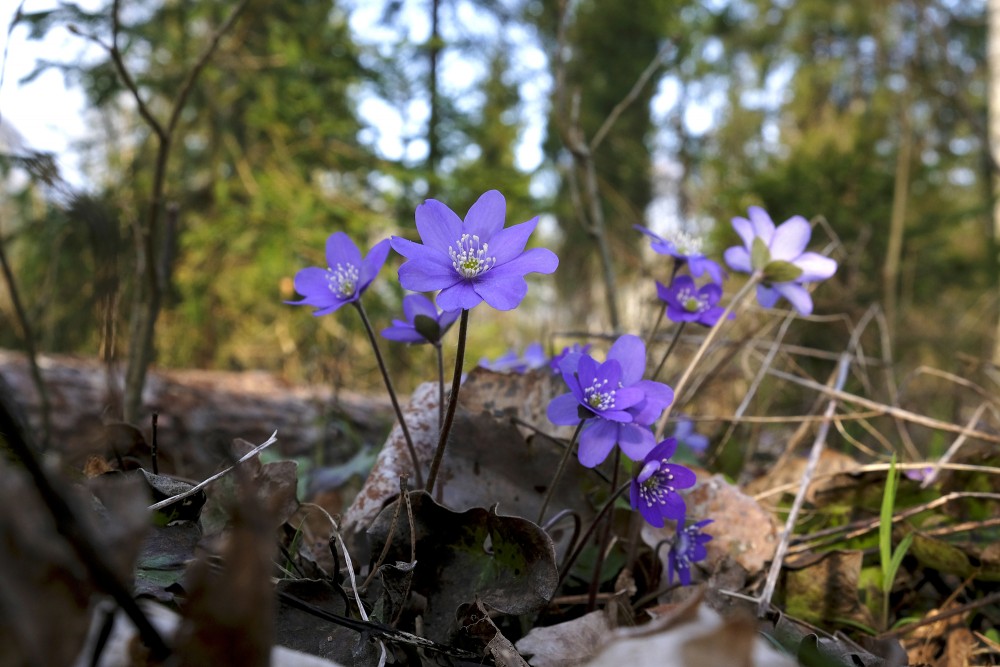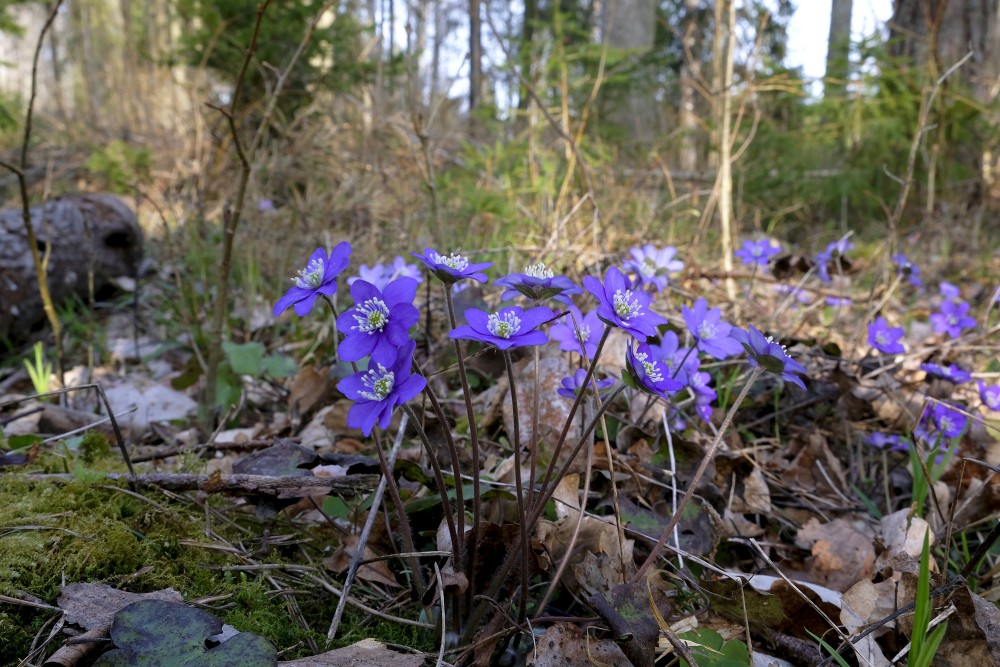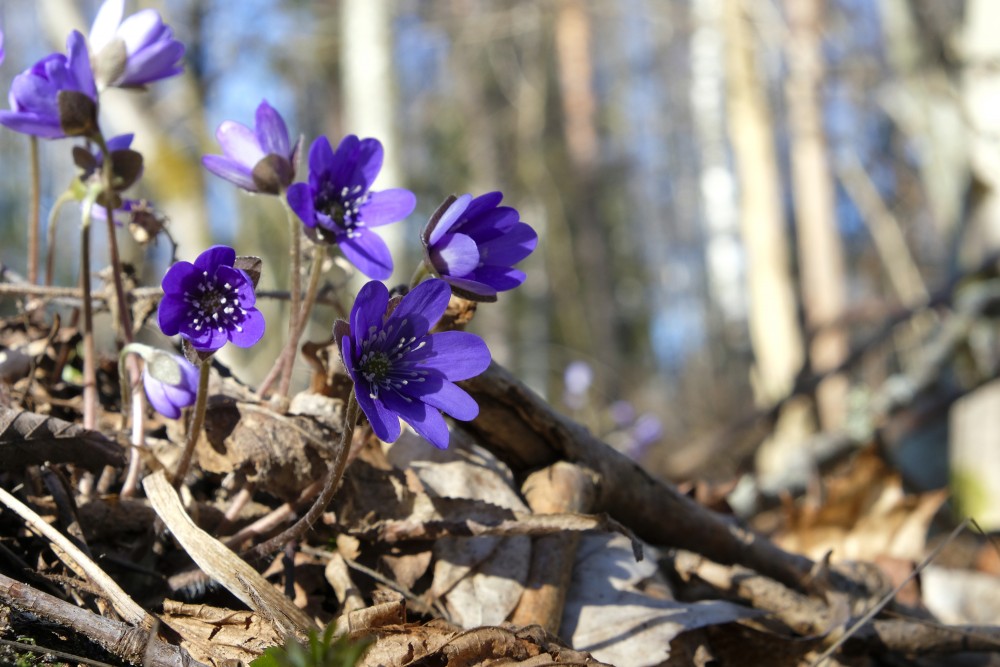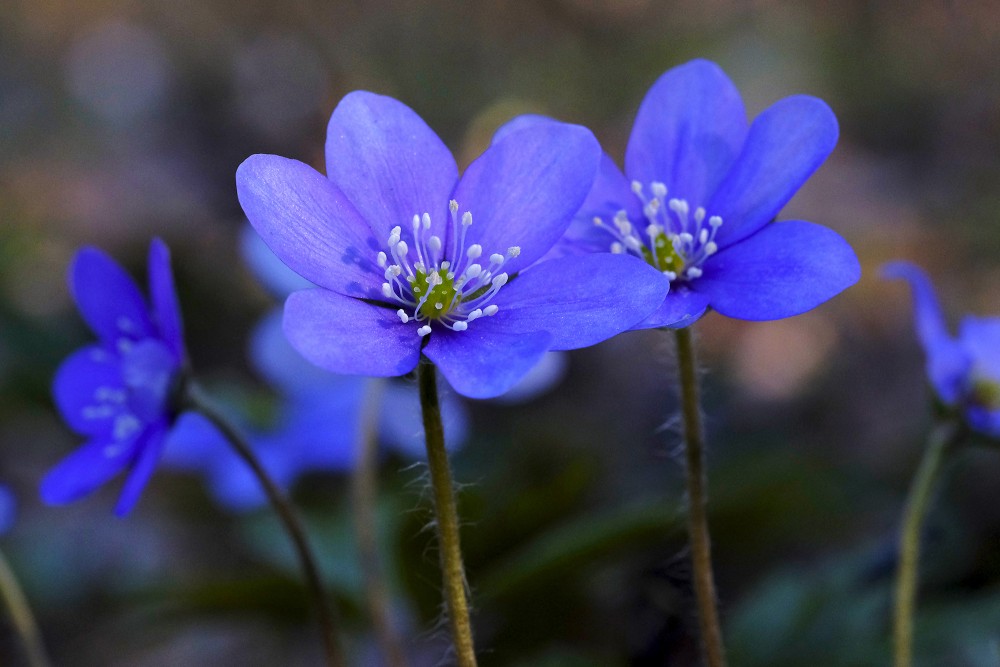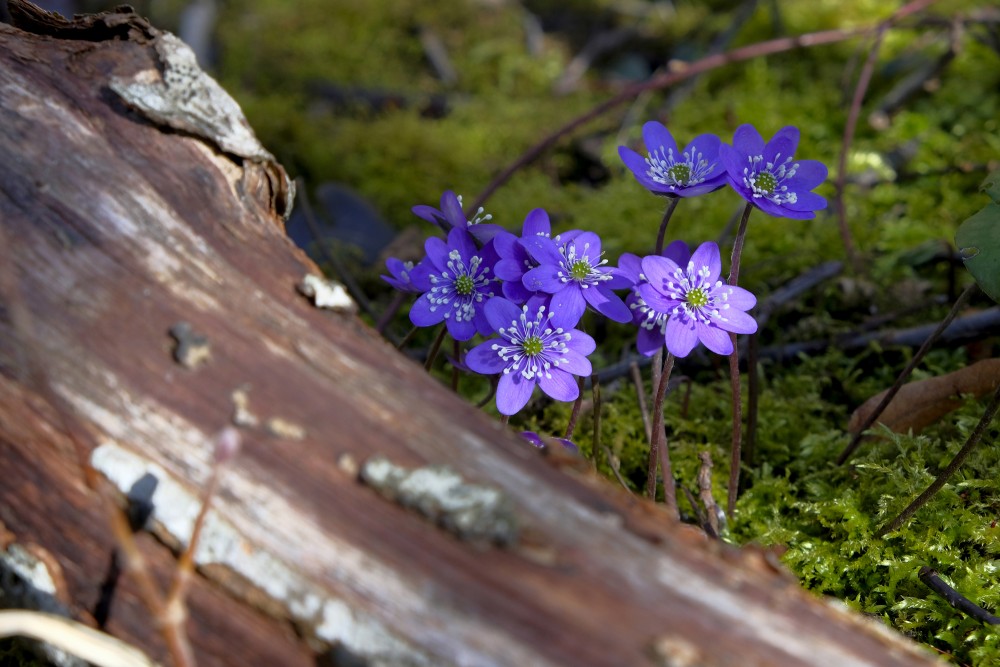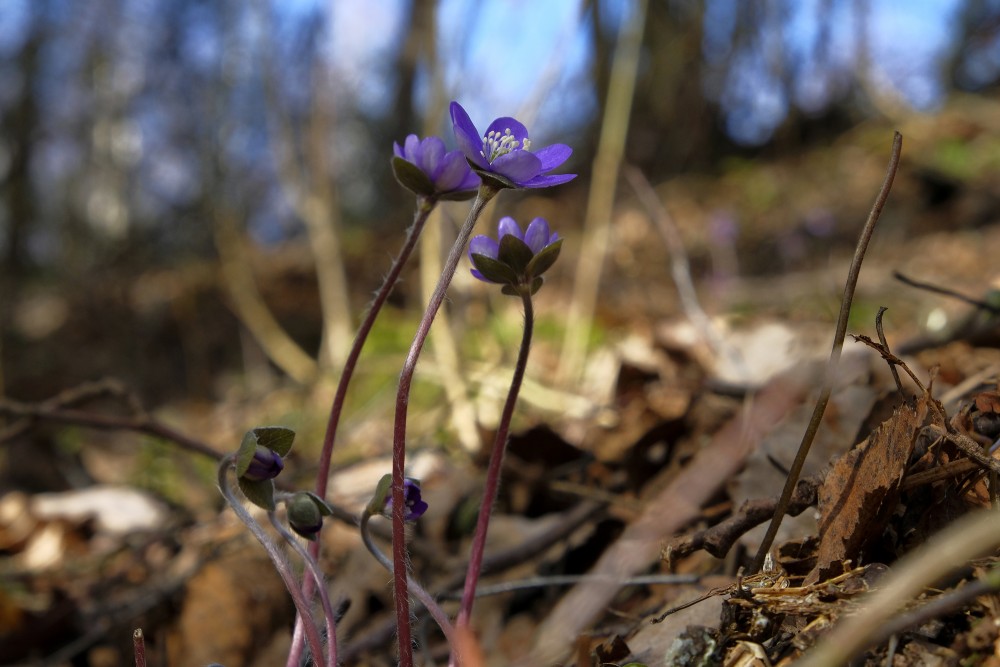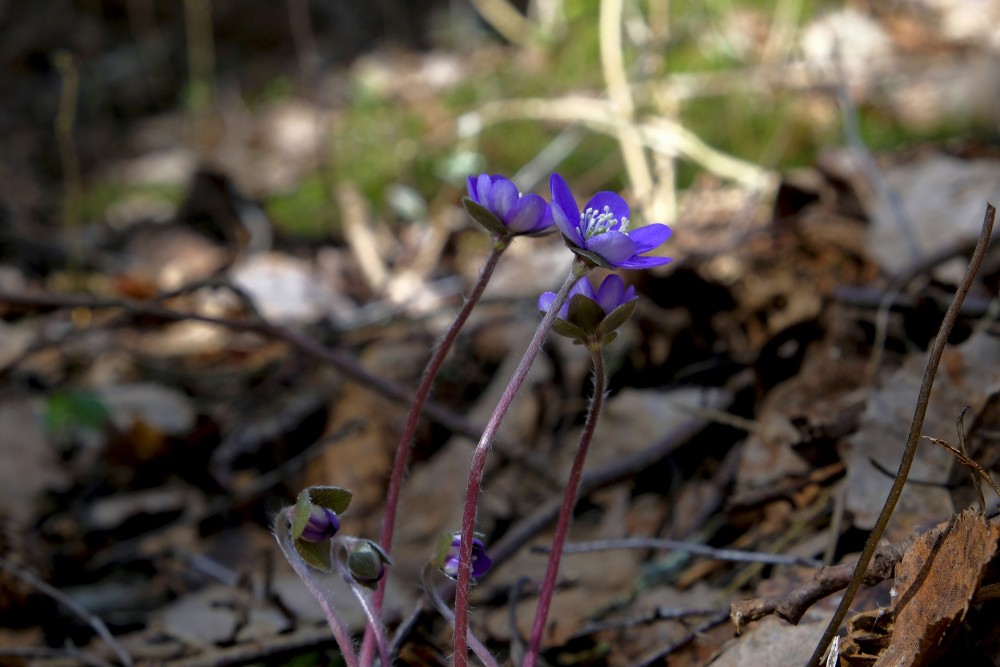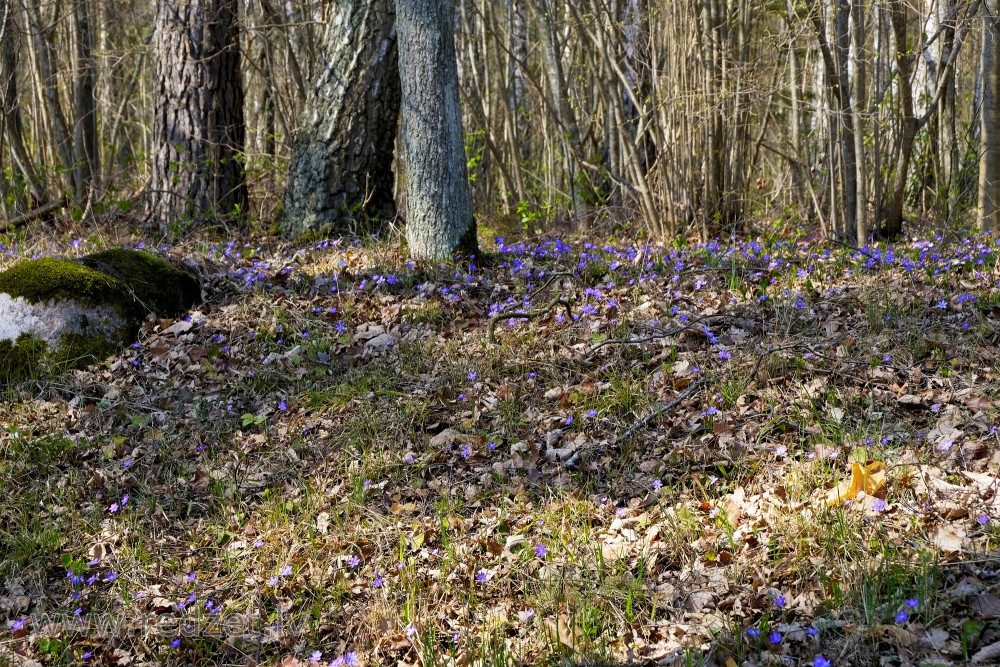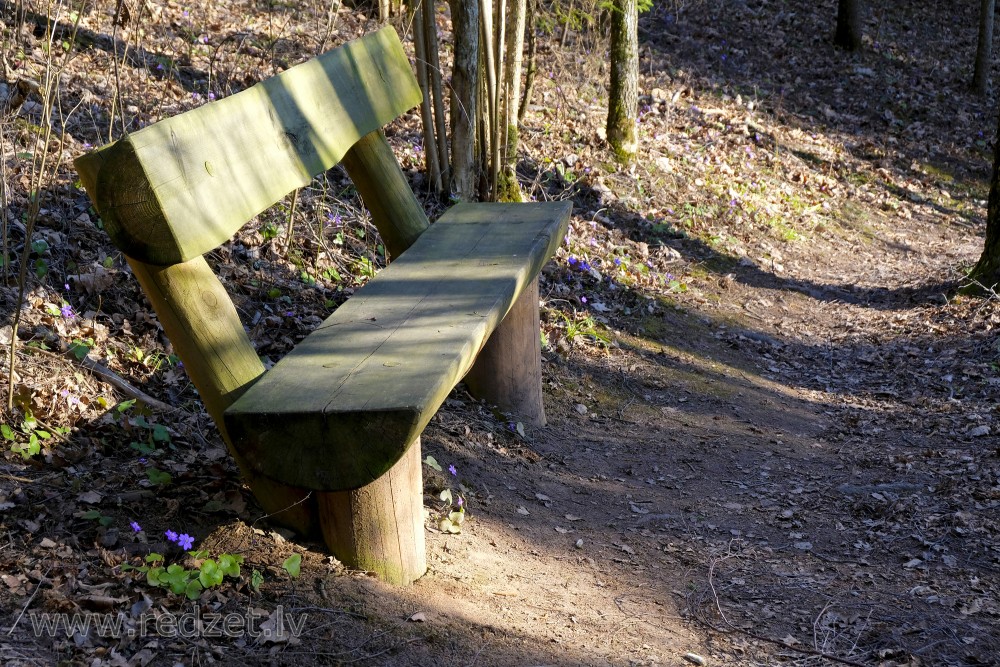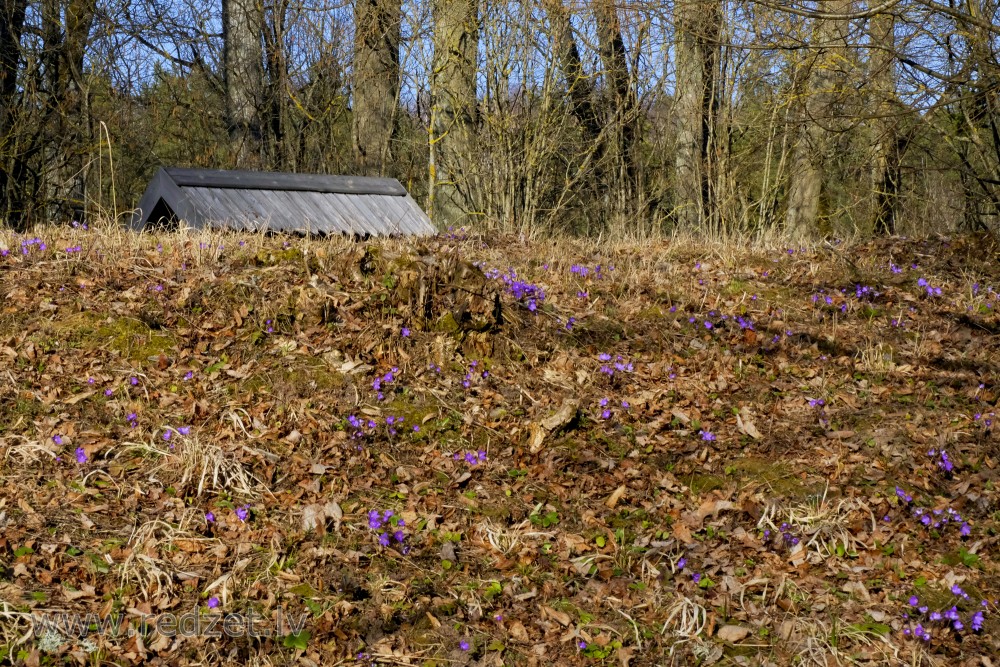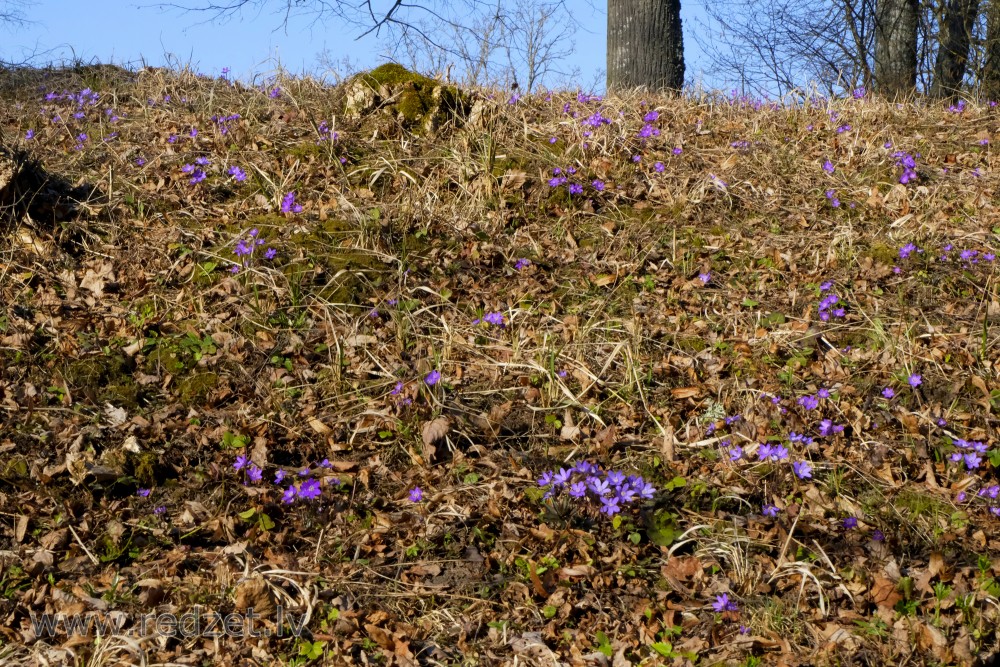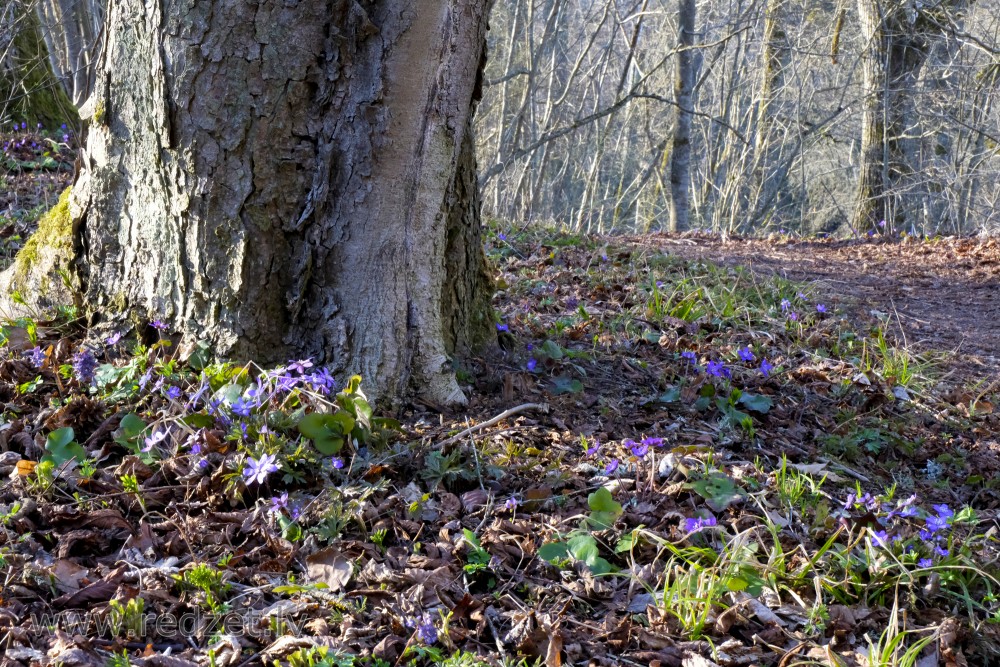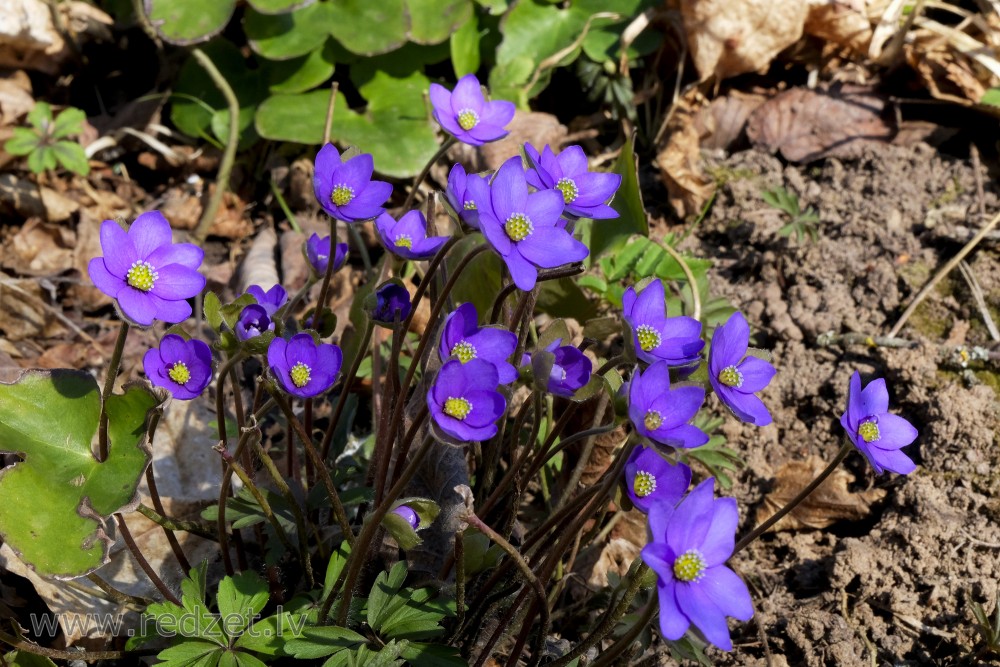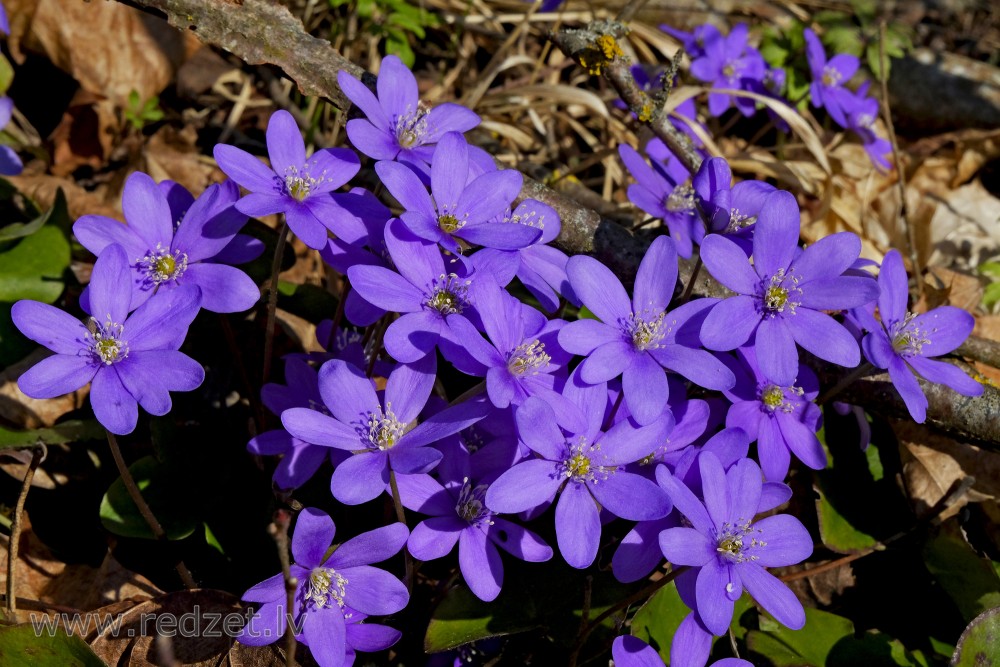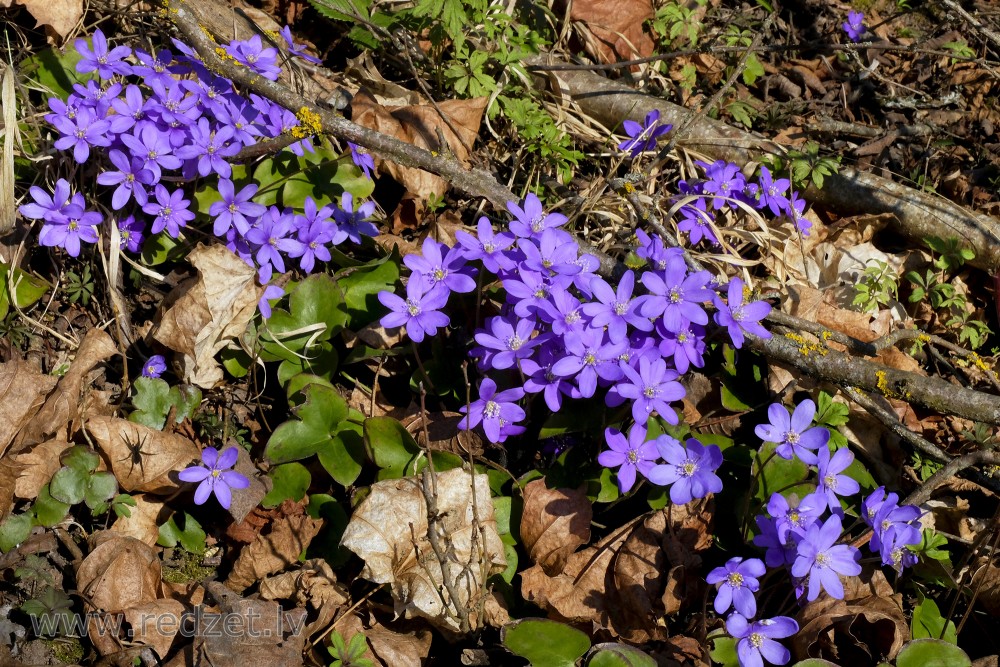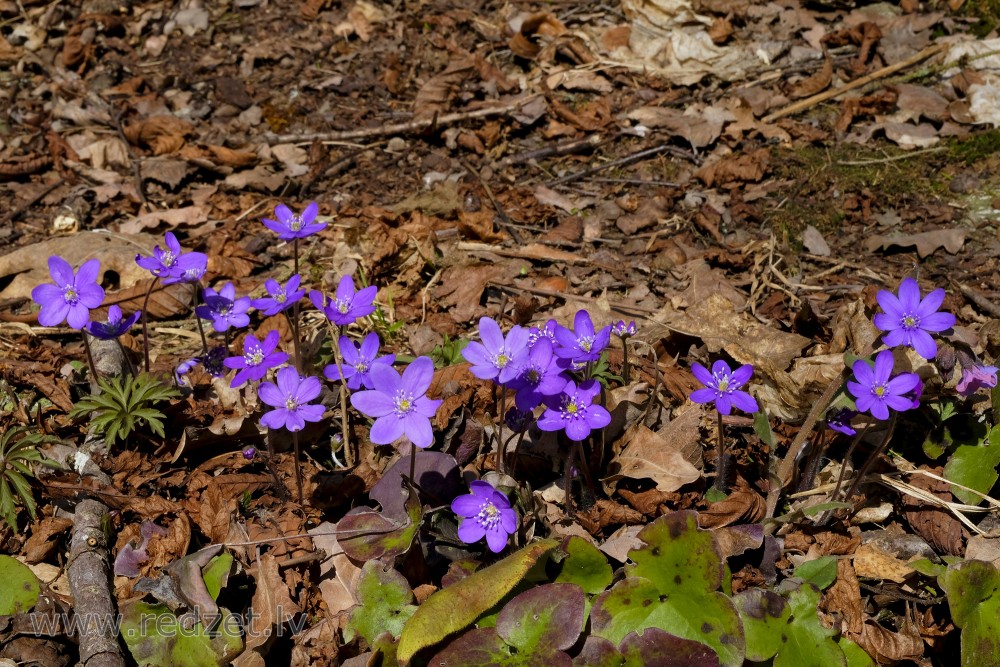(Hepatica nobilis) Kidneywort
Hepatica nobilis, liverleaf, is a species of flowering plant, a herbaceous perennial in the buttercup family Ranunculaceae. It is native to the eastern United States and to central and eastern Canada.It is a small plant growing to 10 cm (3.9 in) tall and broad, with bright blue flowers strongly resembling anemones, in early spring.
In cultivation, this plant has gained the Royal Horticultural Society's Award of Garden Merit.
- Flower: Perianth regular (actinomorphic), blue–bluish violet–purplish red (sometimes white, red or flecked), 15–35 mm (0.6–1.4 in.) wide. Tepals 6–7, outer surface lower part hairy. 3 sepal-like bracts below tepals. Stamens many, white–light red. Gynoecium separate, with many pistils. Flowers solitary, terminating scape.
- Leaves: Basal leaves 3–5, long-stalked, stalk hairy, overwintering, new leaves developing after flowering. Blade wider than long, cordate-based, 3-lobed, with entire margins, leathery, lower surface hairy underneath and often reddish, upper surface dark green, sometimes with light spots.
- Fruit: Hairy, short-tipped, 4–5 mm (0.16–0.2 in.) long achene, often together. Infructescence nodding when ripe.
- Habitat: Young and dry broad-leaved forests and grove-like forests. Also ornamental and an escape from cultivation in parks and yards.
- Flowering time: April–May.
Hepatica is one of the first plants to flower in the spring. The first flowers bring colour to the forest floor in April already, although most plants bloom in May. Hepatica is hardy and not scared of night frost, and even an extended winter doesn’t cause any irreparable damage. Sometimes it is inspired to flower in the autumn too, and if the weather is favourable even in the middle of winter: flowering individuals have even been observed in January and February. Hepatica varies with regards to its colour and leaf form. Red and white flowers are not so rare and white-spotted leaves are quite common, but forms with layered petals and twice-lobed leaves are rare.
Before there were garden and flower shops, hepatica was a sought-after item in the market. Many of the plant’s current stands were originally transplants as people brought them into their yards and gardens as ornamentals. Hepatica is not able to vegetatively expand its area and digging a bunch can decimate the species in the wild: it has clearly dwindled in recent years in its favoured habitats. In the wild the species only spreads through its seeds, which are transported by ants. In its long lifetime it can produce up to ten thousand seeds.
Long ago, especially at the time when the Doctrine of Signs prevailed, hepatica was used medicinally. According to the doctrine the appearance of the plant could be used to discern which organ, body part or fluid the plant was able to treat – hepatica’s leaves are three-parted, just like a liver, and the underside of the leaves is the same colour as raw liver. It was therefore used to treat liver and kidney problems and to arrest bleeding – nowadays however it is identified as a poison. Hepatica is Häme’s provincial flower.
Continue reading